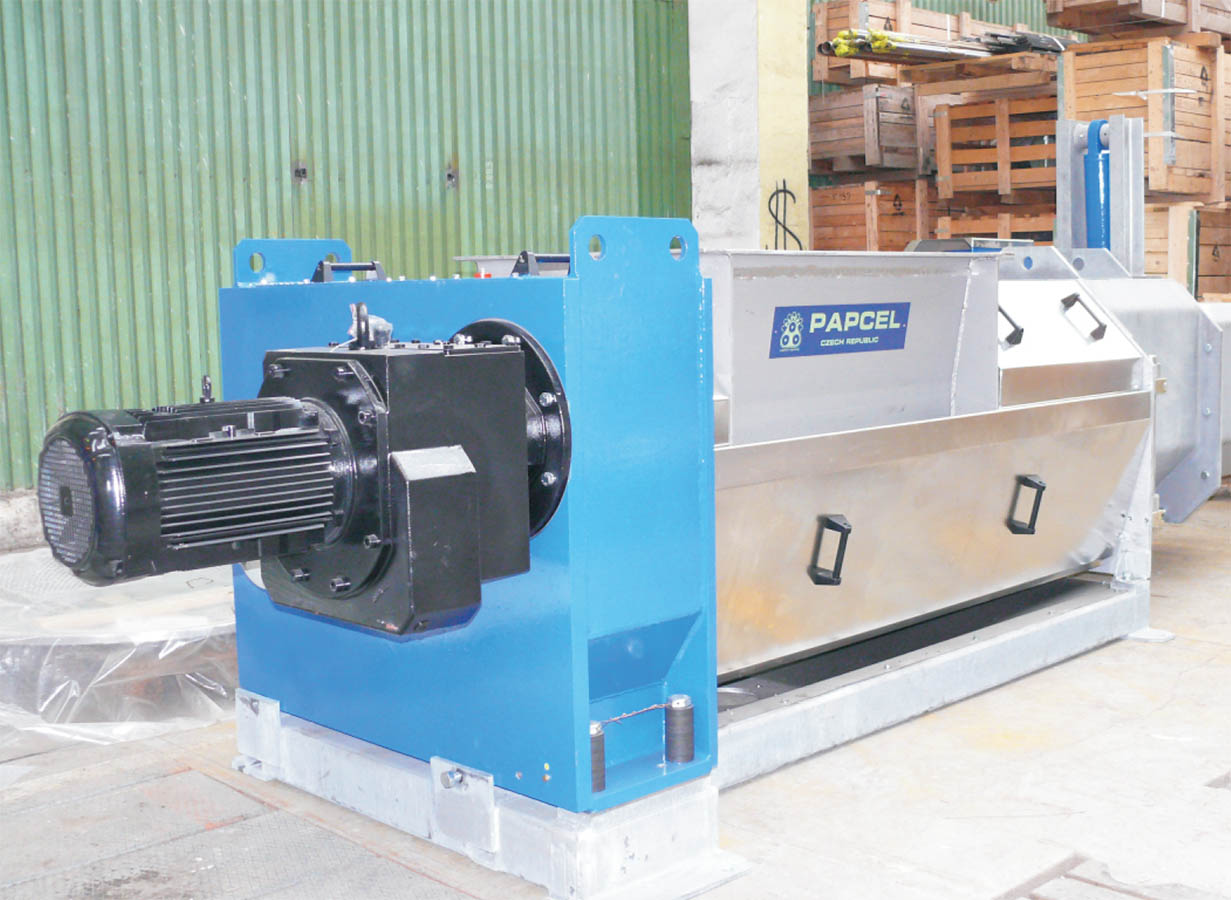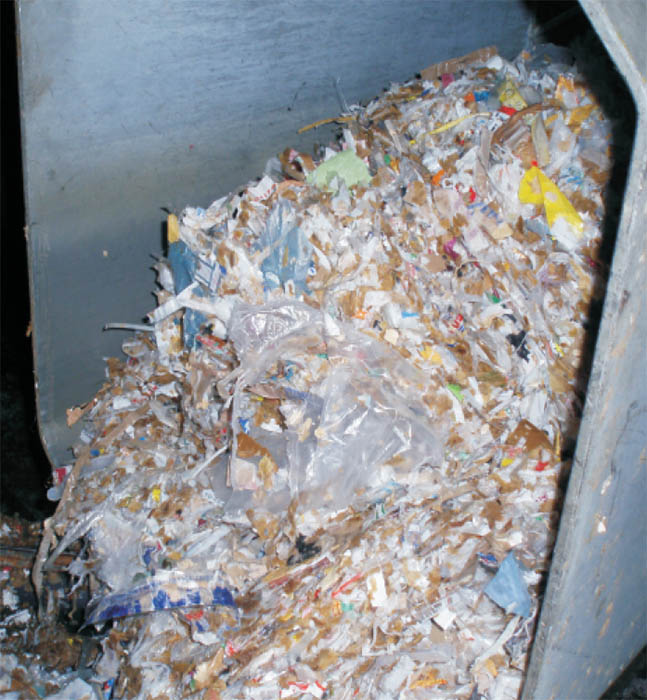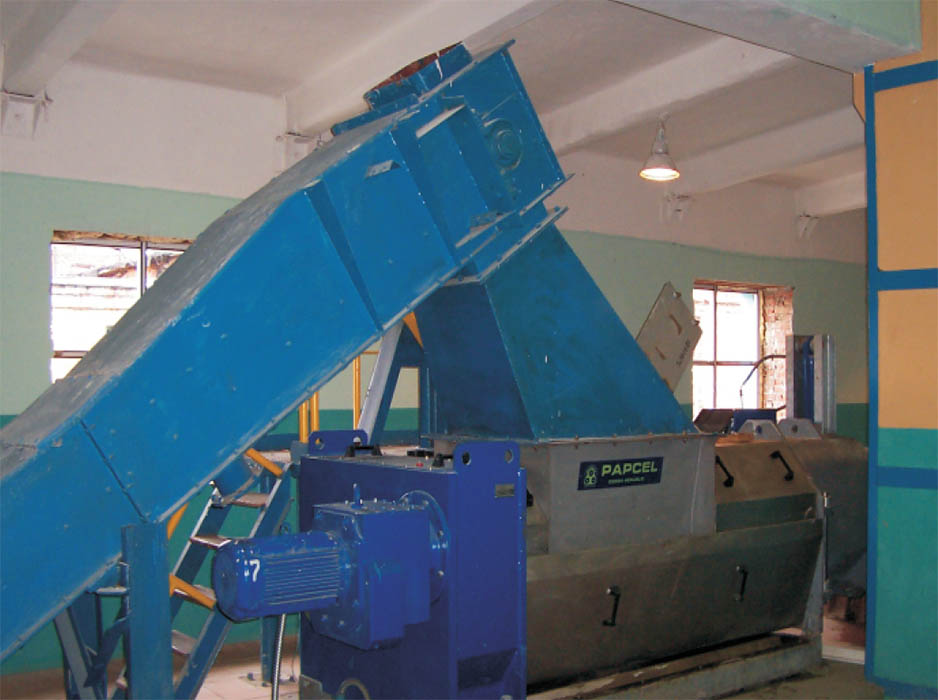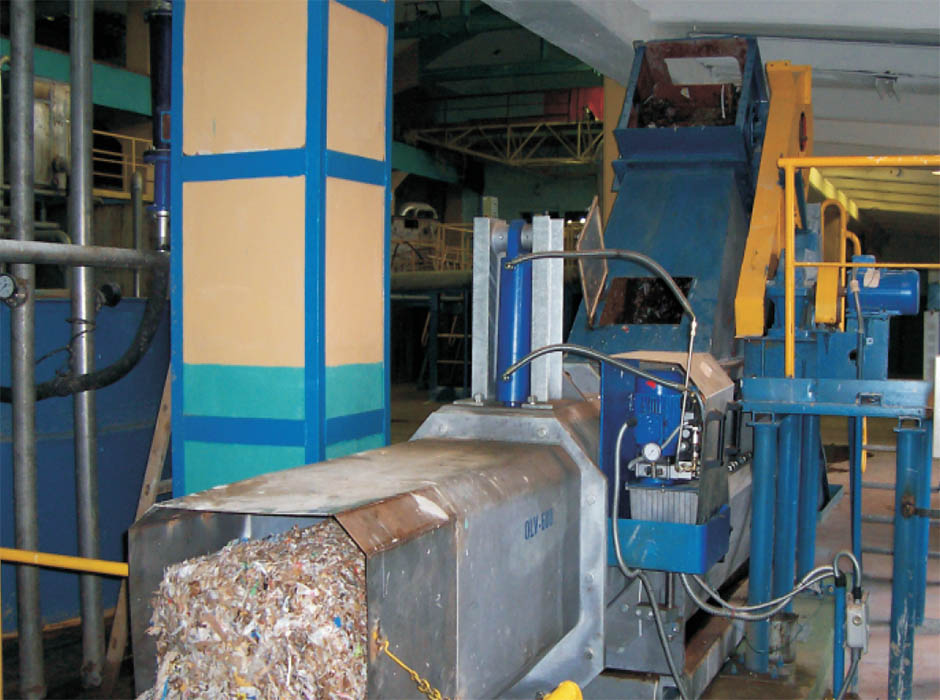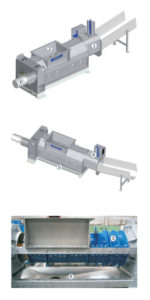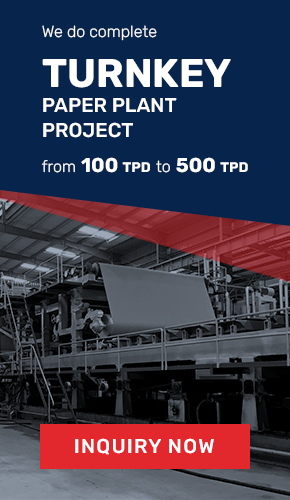Rejects dewatering press OLV Design is primarily designed for an installation in the lines for waste paper processing, i.e. for dewatering rejects from pulpers (horizontal or vertical), periodical reject separators PSN, rejects dewatering drums OBN and rejects dewatering conveyors ODV. Its compact and rugged structure enables to induce high dewatering pressures to compress incoming waste (rejects) to a minimum volume and to press out of the rejects a maximum volume of water. When installed in the waste paper processing line, the press reduces costs for waste disposal considerably and improves an environmentally friendly operation of the whole line in a significant way.
It is a big advantage, if the incoming rejects enter the press being already dewatered (for example from dewatering drum OBN or from vibrating screen VP). This considerably improves the press capacity and operating conditions.
Design
This compact press consists of a rugged structure with a twin operating horizontal conveying screw and segment screens jacketing. Its working medium (rejects with high content of water) enters a feeding chute and there it is pressed by a rotary screw movement against a hydraulically controlled flap. First, the water is removed by gravity being mixed by the screw.
In the pressing zone, the given medium is pushed against the gate. Afterwards, the dewatered and compressed waste is discharged into a container. During the whole process, the waste water goes through screens and a sink for further treatment (i. e. it returns to the system as process water for the pulper).
Main parts
- Horizontal press with twin-operating screw (1)
- Feeding chute (2)
- Segment screens (3)withside protecting bars
- Hydraulic controlled flap (4)
- Collecting chute (5)
- Electric motor with gearbox (6)
Material
- All parts coming in contact with the stock are made of stainless steel, or structural steel protected with hot-dip galvanising
- The gearbox, screw and screens are made of structural steel protected with high-quality coating
- The connecting material is made of stainless steel or its surface is treated with hot-dip galvanising
Machine design and work safety are in compliance with the EU standards and EAC.

